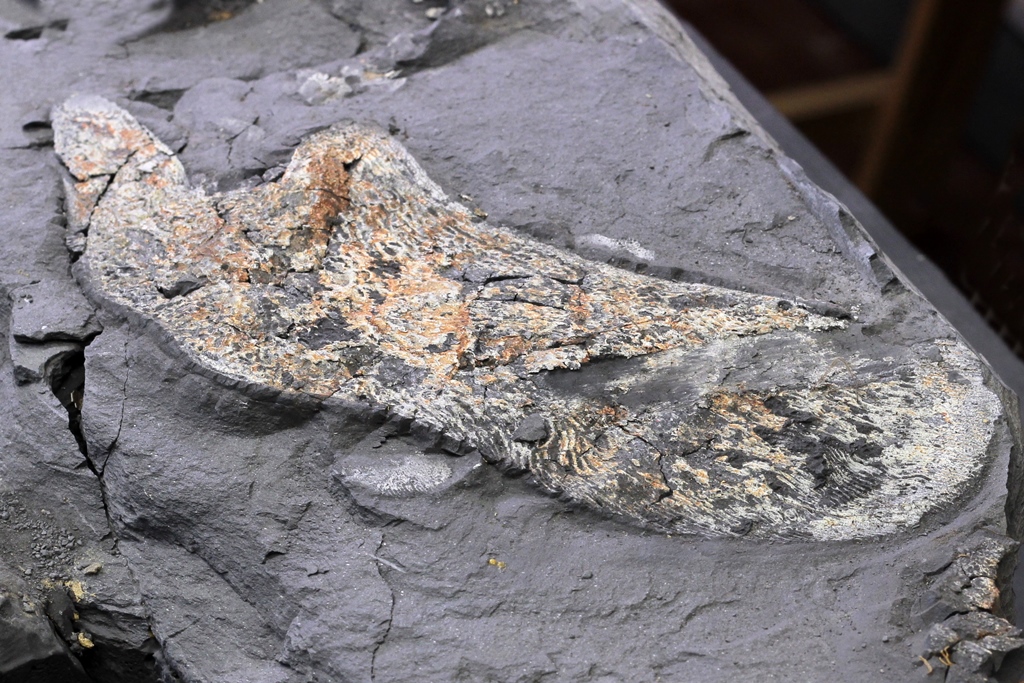by STEVEN LANG
Dr Robert Gess together with Prof Per Ahlberg, has just published an academic paper describing a new type of prehistoric fish called Hyneria udlezinye. The description is based on bones of numerous specimens collected from fossil rich shale deposits at Waterloo Farm outside Makhanda over more than 30 years.

Hyneria udlezinye belongs to an extinct group of lobe-finned fish called the Tristichopterids. This group is closely related to our distant ancestors, the tetrapods, and is often used to show the type of skeleton which became modified into that of the earliest tetrapods, and ultimately all limbed vertebrates including ourselves.
Late in the Devonian Period (419 – to 359 million years ago) one branch of the Tristichopterid family developed into a cluster of giant forms. Evidence indicates that these giant Tristichopterids arose in Gondwana (Which later fragmented into Africa, South America, Antarctica, Australia, India and Madagascar) before migrating to Euramerica.
The estuary where Hyneria swam roughly 360 million years ago has been transformed into the black shale deposits situated today on Waterloo Farm. At that time, the estuary was located within the Antarctic circle on the southern coast of the Gondwana supercontinent. Since the Devonian Period, Gondwana first crashed into Euramerica (to form Pangea) and later gradually broke up and drifted northwards to form the continents in their present locations.
Hyneria udlezinye is unique in the Tristichopterid family because it is the only one known to have lived in a polar region. Almost all other types of fossil Tristichopterids have been retrieved in Australia (which was on the tropical rim of Gondwana), with some of them also occurring in Euramerica (which was likewise in the tropics). This distribution suggested that they had all originated in Gondwana, with some migrating to Euramerica. One unusual exception, Hyneria lindae was, however, only known from North America, then part of Euramerica. The description of closely related Hyneria udlezinye from Gondwana, however, suggests that it too originated in Gondwana before migrating to the northern continent.

Hyneria was a lobe-finned fish which means that its fins were attached to its body by four fleshy pods. Lobe-finned fish were numerous during the Devonian Period but are almost extinct today with only lung fish and coelacanths remaining.
The four fleshy lobes evolved into the limbs of tetrapods.
Gess and Ahlberg have previously described two species of tetrapods (Umzantsia amazana and Tutusius umlambo) from the Waterloo Farm deposits. In fact, almost all of the tetrapod remains he has found occur on the exact same layers of rock as the Hyneria remains. Bones of the type specimen of Umzantsia were recovered from the same slabs of rock as the type specimen of Hyneria udlezinye.
A type specimen is the original specimen from which a description of a new species is made.



